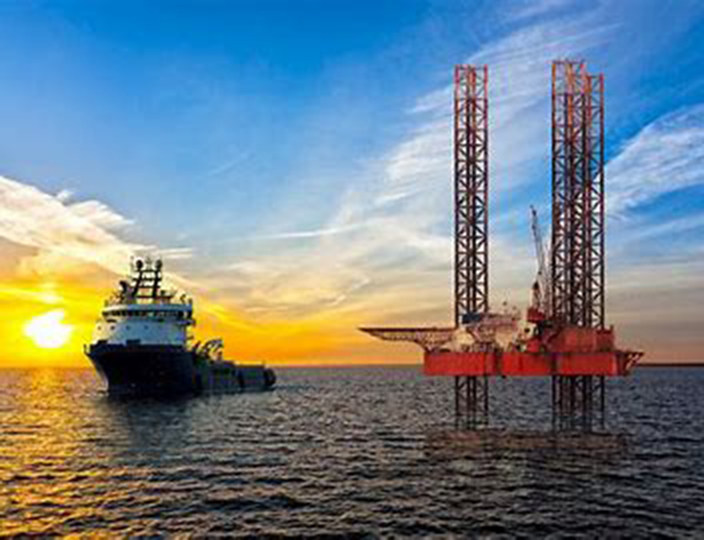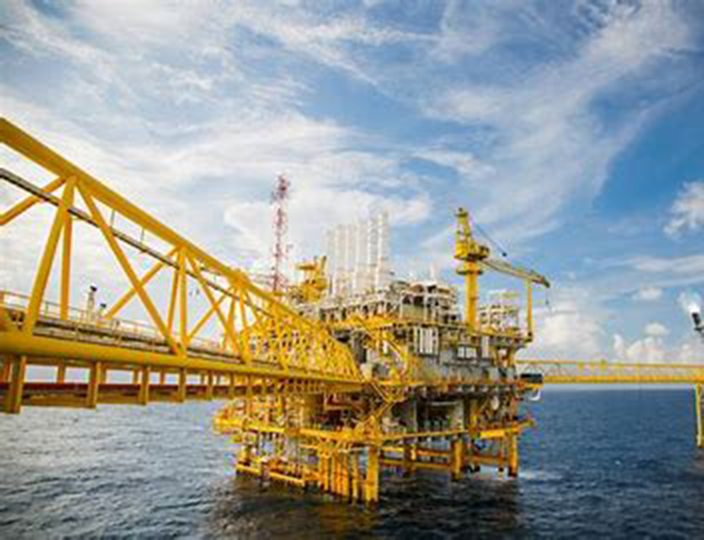Optimal monitoring with unique fire alarm (fire detection and early warning)
Offshore platform monitoring
Offshore platforms are artificial structures built in the ocean for the extraction of oil and gas, offshore wind power generation, and other marine resource development. These platforms are typically exposed to harsh marine environments, facing challenges such as seawater corrosion, strong winds, wave impact, and high salinity.
In offshore platforms, the reliable operation of various equipment and pipeline systems is crucial for production and personnel safety. Among them, temperature is an important parameter that needs to be monitored and controlled to ensure the proper functioning of equipment and pipelines.

Traditional temperature monitoring methods face difficulties in offshore platforms, such as limited coverage, lack of real-time monitoring, and susceptibility to environmental interference. Therefore, distributed temperature sensing (DTS) technology is applied for temperature monitoring in offshore platforms.
DTS technology utilizes optical fibers as sensors, which can be deployed along pipelines and equipment to achieve temperature monitoring across the entire offshore platform. By measuring temperature changes along the optical fibers, real-time temperature distribution can be obtained, allowing for the timely detection of abnormal hotspots or temperature variations.

Fiber deployment: Fiber optic sensors are deployed around key locations and equipment on the offshore platform. The fibers can cover the entire structure and equipment of the platform or be selected based on specific monitoring needs. They can be fixed on the surface or inside the platform to achieve continuous temperature monitoring.
Temperature monitoring: Real-time monitoring of temperature changes in various parts of the offshore platform using fiber optic sensors. The data collected by the fiber optic sensors provides information on the temperature distribution of the platform's structures and equipment, including pipelines, mechanical equipment, electrical devices, etc.
Hotspot identification: Distributed temperature sensing systems can identify temperature hotspots on the platform, which are areas with abnormally high temperatures. These hotspots may indicate equipment malfunctions, gas leaks, oil leaks, and other issues. Timely detection and resolution of these problems can prevent accidents.
Warning and alarm systems: Distributed temperature sensing systems can be equipped with warning and alarm functions based on pre-set temperature thresholds. When the temperature exceeds the set threshold, the system triggers warnings and alarms to alert operators to take appropriate actions to prevent potential hazards.
Data collection and analysis: The temperature data collected by the fiber optic sensors is transmitted to a data collection system and processed and analyzed using specialized software. Through data analysis, temperature trends, abnormal conditions, and potential issues on the platform can be identified, facilitating the development of maintenance and management strategies.
Remote monitoring and control: The distributed temperature sensing system on the offshore platform can be connected to a remote monitoring platform, enabling remote monitoring and control. Operators can access monitoring data remotely to stay informed about the temperature status of the platform and take necessary measures to ensure its safety and normal operation.

Distributed fiber optic temperature sensing technology on offshore platforms provides real-time temperature monitoring and warning capabilities, enhancing the safety, reliability, and efficiency of platform operations and maintenance. This solution is widely applied in offshore oil and gas platforms, offshore wind farms, and other offshore projects, playing a crucial role in safeguarding facility integrity and environmental protection.





